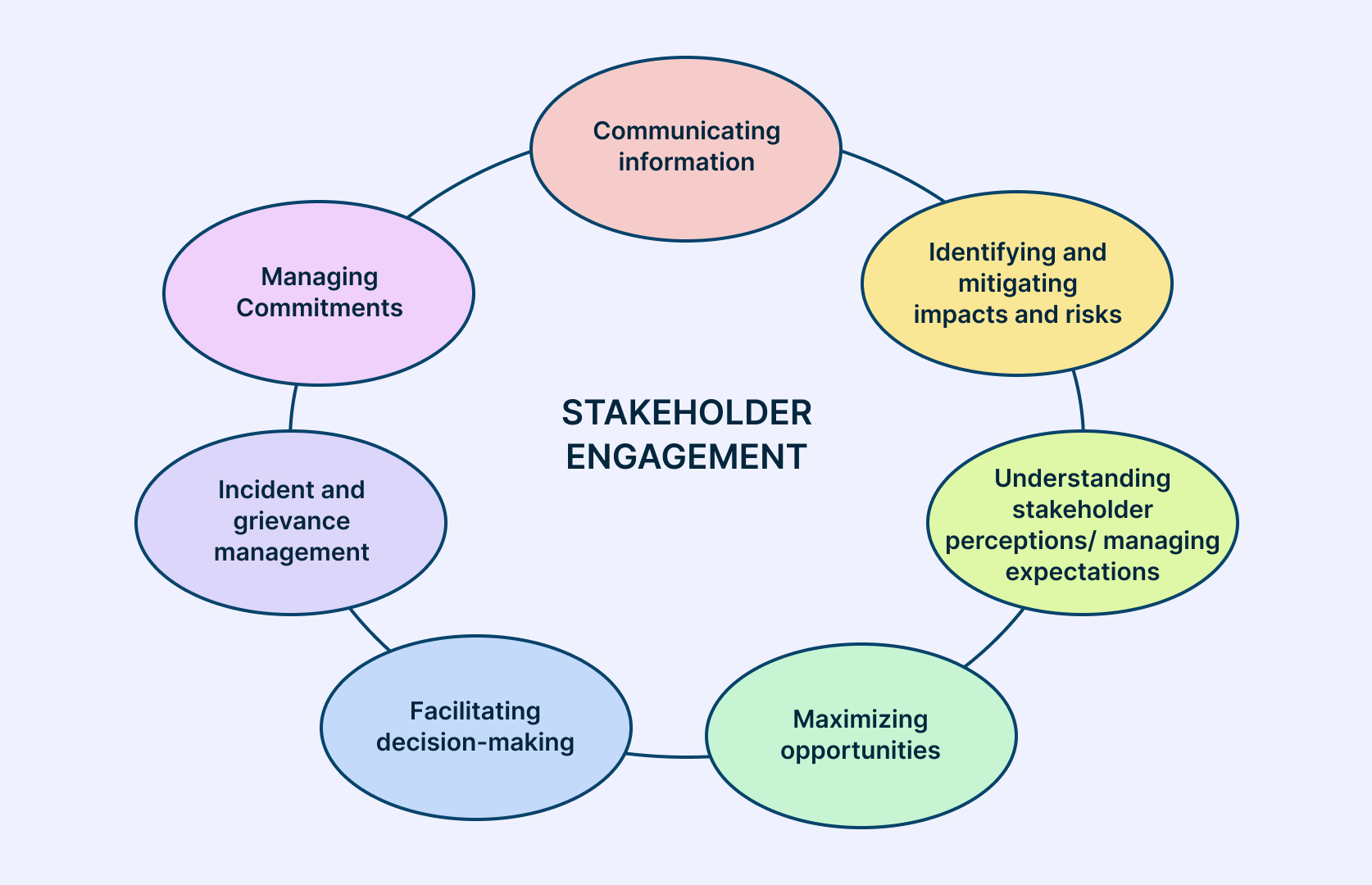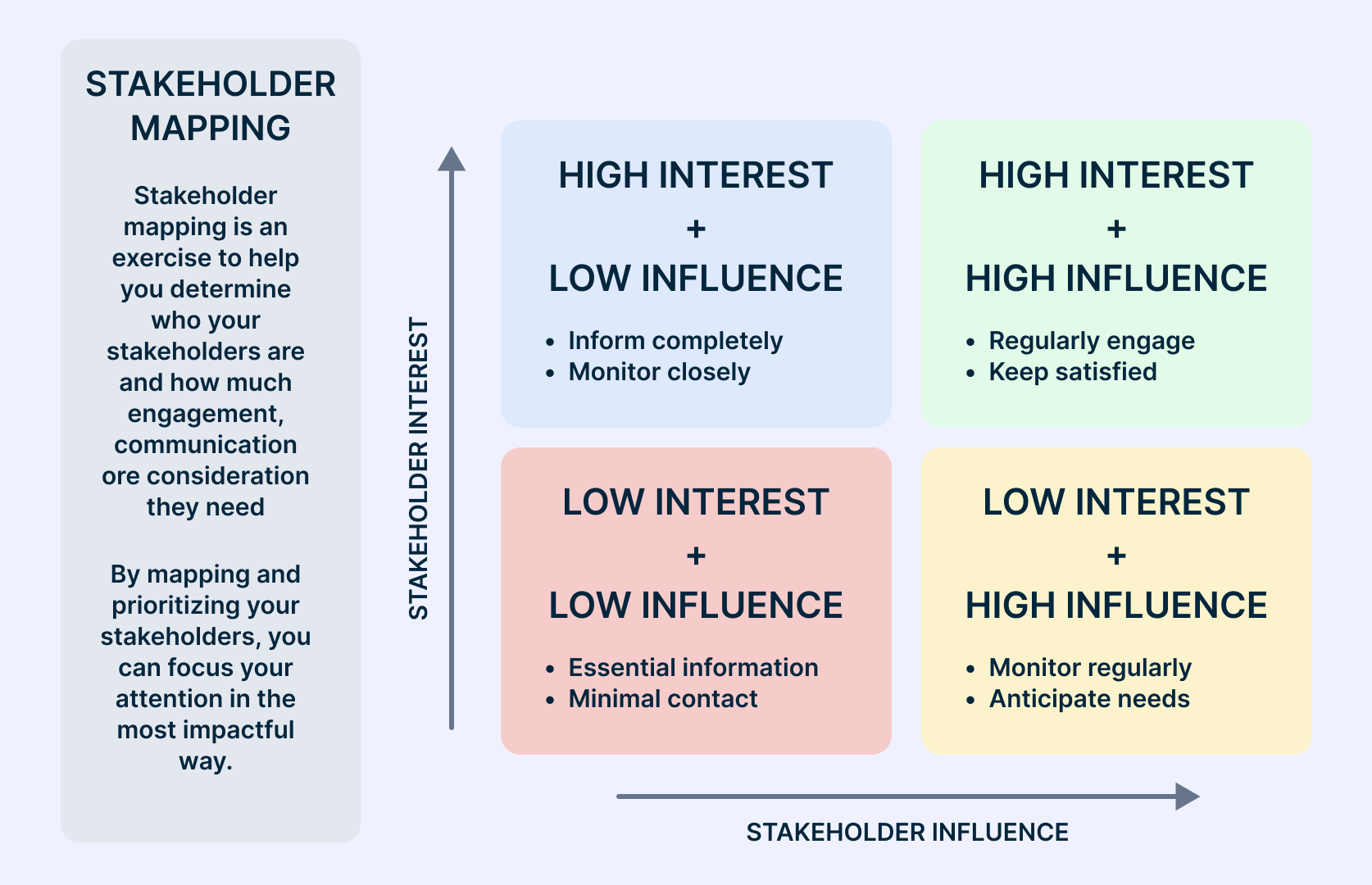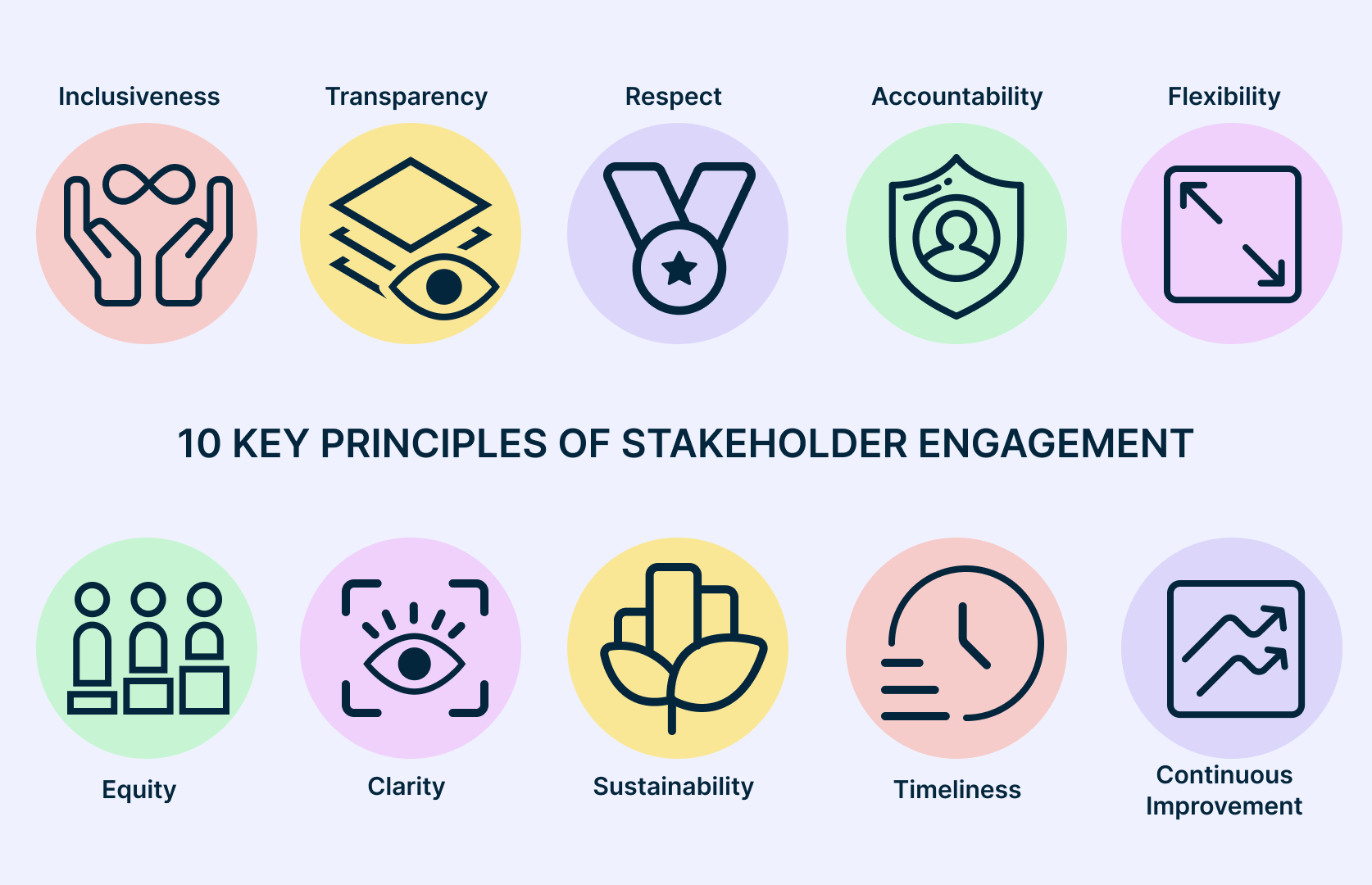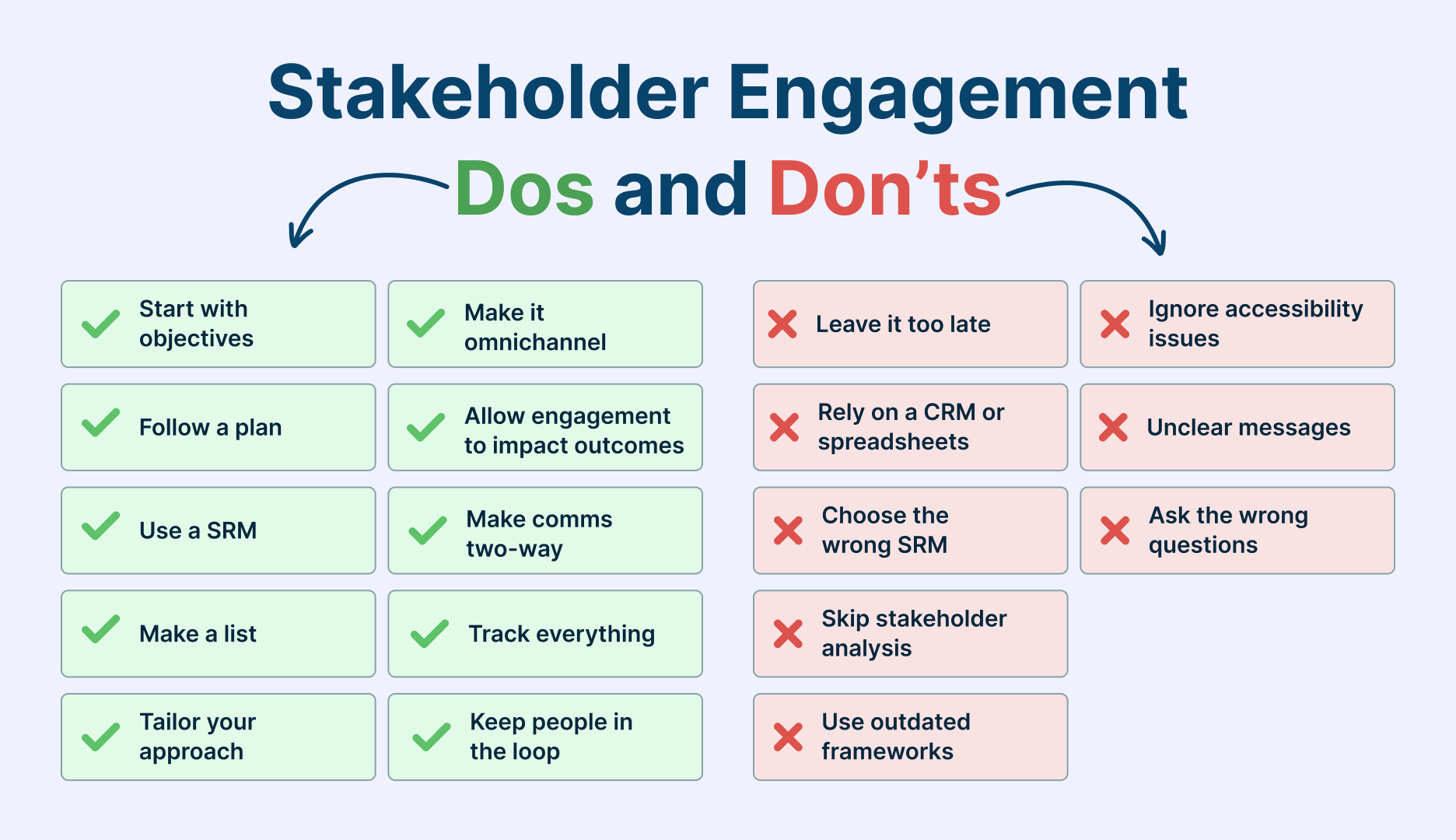Stakeholder engagement model is a critical aspect of business success, involving the systematic identification, analysis, and strategic involvement of all relevant parties affected by a project or business operation. This process is essential for aligning stakeholder expectations with project goals, thereby enhancing overall outcomes.
What is the Stakeholder Engagement Model?
At its core, the stakeholder engagement model refers to the techniques and actions taken by an organization to involve those who may affect or be affected by its decisions. This includes customers, employees, suppliers, and the community at large. Effective engagement helps in managing expectations and reducing project risks, which are crucial for the smooth execution of any plan.

Why is Stakeholder Engagement Crucial?
- Manages Expectations: Regular interaction with stakeholders ensures that everyone has a clear understanding of project goals and progress, which helps in managing expectations and fostering a cooperative environment.
- Reduces Project Risks: By involving stakeholders early and often, potential risks can be identified and mitigated before they become significant issues.
- Improves Decision Making: Stakeholder inputs can provide new insights and perspectives, leading to better decision-making processes.
- Proactively Considers Stakeholder Needs: Engaging with stakeholders allows for a deeper understanding of their needs and expectations, ensuring that the project aligns with their interests.
Real-world examples of successful stakeholder engagement model demonstrate its impact on project success and organizational growth. For instance, companies that actively engage with local communities often experience enhanced brand loyalty and public trust. To learn more about effective stakeholder engagement strategies, refer to this stakeholder mapping guide.

What is a Stakeholder Engagement Plan?
A stakeholder engagement plan is a strategic document outlining how an organization intends to involve and communicate with stakeholders throughout a project or initiative. Stakeholders are individuals, groups, or organizations that have an interest or may be affected by the outcome of the project.
Creating a robust stakeholder engagement plan is pivotal for any project’s success. This plan serves as a blueprint for how organizations can communicate and involve key stakeholders throughout the lifecycle of a project. Here’s how you can craft an effective plan tailored to your project needs.
The plan typically includes:
Identification of Stakeholders: This involves identifying all individuals, groups, or organizations that may have an interest in or be impacted by the project.
Analysis of Stakeholder Needs and Expectations: Understanding the concerns, interests, expectations, and potential impacts of the project on each stakeholder group.
Stakeholder Communication Strategy: Outlining how the organization will communicate with stakeholders, including the frequency, methods (such as meetings, emails, reports, etc.), and key messages.
Engagement Methods: Detailing specific methods for engaging with stakeholders, such as workshops, focus groups, surveys, public consultations, etc.
Roles and Responsibilities: Clarifying who within the organization is responsible for engaging with stakeholders and ensuring effective communication.
Timeline: Setting out a timeline for when and how often engagement activities will occur throughout the project lifecycle.
Feedback and Evaluation Mechanisms: Establishing mechanisms for gathering feedback from stakeholders and evaluating the effectiveness of the engagement process.
Adaptation and Iteration: Building in flexibility to adapt the engagement plan based on stakeholder feedback and changing circumstances.
Overall, a stakeholder engagement plan is crucial for ensuring that stakeholders are informed, involved, and their concerns are addressed throughout the project, ultimately leading to more successful outcomes and better relationships with stakeholders.
The 10 Principles of Stakeholder Engagement Model

Inclusiveness: Ensure that all relevant stakeholders are identified and involved in the engagement process. This includes both internal and external stakeholders.
Transparency: Provide clear and accurate information about the purpose, scope, and outcomes of the engagement process. Transparency builds trust and credibility.
Respect: Treat all stakeholders with respect and consideration, regardless of their position or influence. Acknowledge their perspectives and contributions.
Equity: Ensure that all stakeholders have equal opportunities to participate and express their views. Avoid favoritism or bias towards particular stakeholders.
Accountability: Take responsibility for the outcomes of the engagement process and follow through on commitments made to stakeholders. Accountability builds confidence in the process.
Flexibility: Be open to adapting the engagement process based on feedback from stakeholders and changing circumstances. Flexibility helps to address diverse needs and interests.
Timeliness: Engage stakeholders in a timely manner, providing opportunities for input at key stages of decision-making processes. Timeliness demonstrates responsiveness and commitment.
Clarity: Clearly communicate the goals, expectations, and outcomes of the engagement process to all stakeholders. Clarity helps to manage expectations and avoid misunderstandings.
Sustainability: Foster long-term relationships with stakeholders based on trust, collaboration, and mutual benefit. Sustainable engagement requires ongoing communication and relationship-building efforts.
Continuous Improvement: Regularly evaluate the effectiveness of stakeholder engagement efforts and seek feedback for improvement. Continuous improvement ensures that engagement processes remain relevant and responsive to stakeholder needs.
These principles provide a foundation for meaningful and effective stakeholder engagement across various contexts, whether in business, government, or community settings.
Mapping Your Stakeholders for Better Engagement
Effective stakeholder engagement begins with a clear understanding of who your stakeholders are and how they influence your project. This section delves into the techniques for identifying and categorizing stakeholders and explores the benefits of visual stakeholder mapping, which is crucial for prioritizing stakeholders based on their influence and interest.
- Identifying Stakeholders: Start by listing all possible individuals or groups affected by the project. This includes internal stakeholders like team members and management, as well as external ones such as clients, suppliers, and regulatory bodies.
- Visualizing Stakeholder Relationships: Utilize tools like Creately’s Mind Map Maker to create visual representations of stakeholder relationships. This helps in understanding the dynamics between different stakeholders and can guide the development of tailored engagement strategies.
- Prioritizing Stakeholders: Based on the visual maps, stakeholders can be categorized into groups such as high influence-high interest, high influence-low interest, and so on. This categorization helps in tailoring communication strategies effectively.
By employing these techniques, teams can ensure a more structured and effective approach to stakeholder engagement. Visual tools not only aid in the mapping process but also enhance the overall strategic planning, making it easier to navigate complex stakeholder landscapes.
Tips to Create a Robust Stakeholder Engagement Plan

Creating a robust stakeholder engagement plan is crucial for any project’s success. It ensures that all parties involved are aligned and can contribute effectively. Here are some essential steps to develop an effective plan:
Defining Scope and Goals
Begin by clearly defining the scope and goals of your engagement efforts. What are the key outcomes you expect from engaging stakeholders? This clarity helps in aligning the entire process towards achieving specific objectives.
- Identify the main objectives of stakeholder engagement.
- Clarify the scope of the project to all stakeholders.
Communication Strategies
- Continuous Communication: Establish a routine for regular updates and feedback. Utilize platforms that support Strategic Planning Tools to maintain clarity and consistency in communications.
- Incorporating Feedback: Make your plan dynamic by integrating stakeholder feedback regularly to adapt to new insights and conditions. This helps in refining strategies and maintaining alignment with stakeholder expectations.
Developing Engagement Strategies
Each stakeholder group might have different interests and levels of influence. It’s important to develop tailored engagement strategies that cater to these differences. Utilize tools like Stakeholder Analysis Examples to identify and prioritize stakeholders effectively.
- Use visual tools to map out stakeholder interests and influence.
- Develop communication plans that address the specific needs of different groups.
Implement the plan with regular updates and checkpoints. This includes setting up regular meetings, updates, and feedback loops to ensure that stakeholders are kept in the loop and their inputs are considered in the decision-making process.
Finally, measure and analyze the effectiveness of the engagement. This can be done through feedback surveys, stakeholder meetings, and by assessing the impact of engagement on project outcomes. Tools like Decision-Making Tools can be instrumental in this phase.
By following these steps, you can ensure that your stakeholder engagement plan is not only comprehensive but also effective in achieving its intended goals.
Leveraging Creately’s Visual Collaboration Tool for Stakeholder Planning
Effective stakeholder engagement is pivotal for the success of any project, and leveraging the right tools can significantly enhance this process. Creately’s visual collaboration platform is designed to streamline stakeholder planning and engagement, making it an indispensable tool for project managers and teams.
Features of Creately for Engagement
- Visual Stakeholder Mapping: Creately’s platform allows users to visually map out stakeholders, clearly identifying their roles, influence, and relationships. This visual approach helps in understanding complex stakeholder structures at a glance, which is crucial for effective engagement.
- Real-Time Collaboration: Stakeholder planning often requires input from various team members. Creately supports real-time collaboration, ensuring that all team members can work together synchronously, no matter their location. This feature fosters a unified approach to stakeholder engagement.
- AI-Powered Tools: With Creately VIZ, the platform’s AI capabilities help in automatically generating stakeholder maps and engagement plans. This not only saves time but also provides data-driven insights that enhance stakeholder engagement strategies.
Integrating Creately in Project Management
Integrating Creately into your project management toolkit can transform how you plan and engage with stakeholders. The platform’s ability to centralize information and create visual representations ensures that every team member is on the same page, which is essential for aligning project goals with stakeholder expectations.
Moreover, Creately’s compatibility with other project management tools allows for seamless integration, ensuring that stakeholder engagement is not a standalone task but a core part of the project management process. This integration helps in maintaining continuity and consistency across all stages of the project.
By utilizing Creately for your stakeholder engagement plans, you not only leverage a powerful visual tool but also ensure that your engagement strategies are robust, inclusive, and effective.






